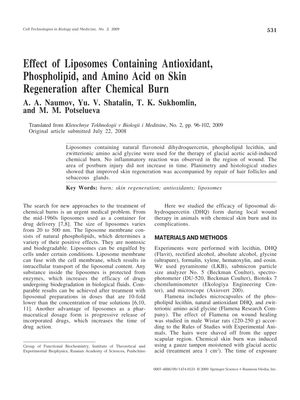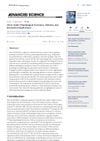Effect of Liposomes Containing Antioxidant, Phospholipid, and Amino Acid on Skin Regeneration After Chemical Burn
April 2009
in “
Bulletin of Experimental Biology and Medicine
”

TLDR Flamena, a liposomal mix, helps skin heal better after a chemical burn.
In 2009, researchers conducted a study on male Wistar rats to assess the effectiveness of a liposomal formulation named Flamena, which contained dihydroquercetin (DHQ), lecithin, and glycine, in promoting skin regeneration after a chemical burn. The study demonstrated that the application of these liposomes, with sizes between 20 to 500 nm, led to improved skin regeneration, including the repair of hair follicles and sebaceous glands, without causing an inflammatory reaction or an increase in the injury area. The positive effects were attributed to the antioxidant properties of DHQ, the anti-inflammatory and capillary-protecting effects, glycine's inhibitory neurotransmitter action, and lecithin's role in cell membrane formation and recovery. The findings suggested that Flamena was effective in postburn therapy and in maintaining tissue homeostasis. The study was funded by the Federal Agency of Education and a departmental program focused on the development of higher education's scientific potential.


